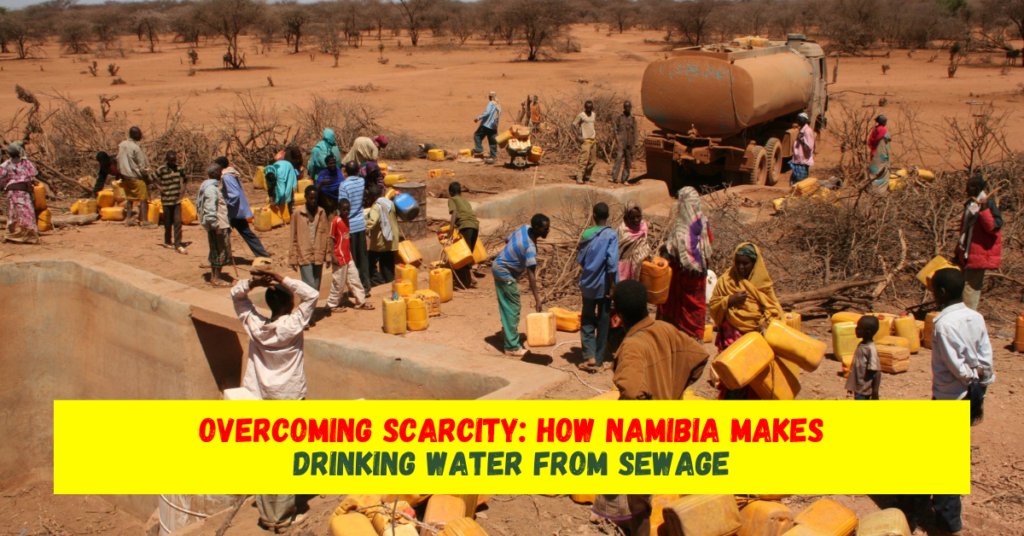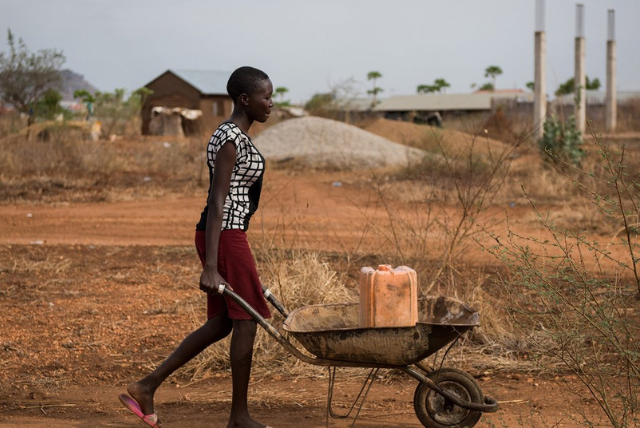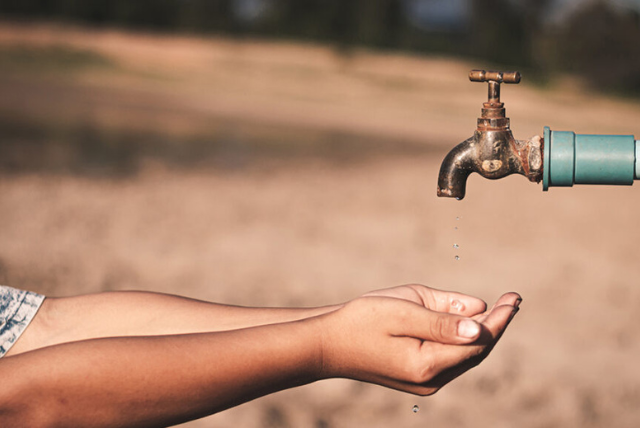Every year, the world commemorates International Water Day, highlighting the vital role water plays in our lives and the struggles faced by many in accessing clean water. This year, we focus on Africa, a continent grappling with water scarcity due to various factors. Namibia, a country bordering two major deserts, stands out as a pioneer in utilizing innovative solutions to address this challenge.

This article delves into Windhoek, Namibia’s capital city, and its remarkable feat of transforming sewage water into clean drinking water. We explore the Windhoek Reclamation Plant, a world-first project, and the impact it has on the city’s water security. We will also explore the broader challenges of water scarcity in Africa and potential solutions for a sustainable future.
Water Scarcity in Africa: A Looming Crisis
With a population exceeding 1.3 billion people, Africa faces a significant water scarcity challenge. Uneven rainfall patterns, prolonged droughts, and limited freshwater resources plague many regions. Climate change further exacerbates the situation, with rising temperatures leading to increased evaporation and erratic weather events.
The scarcity of clean water has severe consequences for Africa’s population. It hinders sanitation, hygiene practices, and agricultural productivity. Waterborne diseases become more prevalent, impacting public health. Women and children, especially girls, often bear the brunt of water collection, spending hours fetching water from distant sources, limiting their opportunities for education and economic development.
Windhoek’s Pioneering Water Reclamation Project
Windhoek, nestled amidst Namibia’s arid landscape, faced a critical water shortage in the 1960s. With natural resources dwindling, the city envisioned a ground breaking solution – treating domestic wastewater and transforming it into potable water. The Windhoek Reclamation Plant, inaugurated in 1968, became a global frontrunner in wastewater reclamation for potable use.
The Windhoek Reclamation Plant utilizes a multi-stage treatment process. Wastewater undergoes rigorous filtration, including reverse osmosis, to remove impurities and ensure the resulting water meets stringent drinking water quality standards. Regular laboratory testing ensures consistent quality and public safety.
The Impact of Windhoek’s Water Reclamation
The Windhoek Reclamation Plant supplies a significant portion of the city’s water needs, contributing between 15% and 25% of Windhoek’s total water consumption. This reclaimed water serves as a reliable source, especially during periods of drought or limited rainfall. The plant’s success has garnered international attention, with delegations from other water-stressed regions visiting to learn from Windhoek’s experience.
Overcoming the “Yuck Factor”: Public Perception and Acceptance
One of the significant challenges associated with water reclamation projects is public perception. The idea of consuming water derived from wastewater can be unappealing. However, experts emphasize the high quality of reclaimed water. Through advanced treatment processes, reclaimed water surpasses the quality of some natural freshwater sources.
Public education campaigns play a crucial role in overcoming the “yuck factor” and fostering acceptance of reclaimed water. Strategies like transparent communication about the treatment process, emphasizing the rigorous testing procedures, and highlighting the benefits for water security can help build public trust. In Windhoek, blending reclaimed water with other freshwater sources before distribution further addresses public concerns.

Beyond Windhoek: Water Reclamation as a Potential Solution
Windhoek’s story serves as a beacon of hope for other water-scarce regions. Water reclamation presents a viable solution, particularly in arid areas with limited freshwater resources. Several other cities around the world, including Singapore and California, have successfully implemented water reclamation projects.
Challenges and Considerations for Widespread Adoption
While water reclamation offers immense potential, certain challenges need to be addressed for widespread adoption. The initial investment required to build and maintain sophisticated treatment plants can be substantial. Furthermore, technical expertise is necessary to operate and monitor the treatment processes effectively.
Public education and awareness campaigns are crucial for gaining public acceptance. Additionally, robust regulations and stringent quality control measures are essential to ensure the safety and reliability of reclaimed water.
See More: Niger Crisis: A Crossroads of Geopolitics, Resources and Aspiration
Looking Ahead: A Multi-pronged Approach to Water Security in Africa
Water scarcity is a complex challenge in Africa, and there is no single solution. A multi-pronged approach is necessary to ensure sustainable water security for the continent’s growing population.
Water Conservation: Implementing water conservation measures at all levels, from domestic households to agricultural practices, is critical. Promoting water-efficient technologies and encouraging responsible water use can significantly reduce demand.
Infrastructure Development: Upgrading and expanding water infrastructure, including pipelines and storage facilities, is essential to minimize water loss through leakage and improve water distribution efficiency.
Rainwater Harvesting: Encouraging rainwater harvesting techniques can provide a valuable source of freshwater, especially in rural communities. Simple rainwater collection systems can be implemented at the household level to capture.
Desalination: Desalination, the process of removing salt from seawater, offers a potential solution in coastal regions. While advancements have brought down costs, desalination remains an energy-intensive process, and the environmental impact of brine disposal requires careful consideration.
Groundwater Management: Sustainable management of groundwater resources is crucial. Overexploitation of groundwater can lead to depletion and saltwater intrusion. Implementing regulations and monitoring groundwater extraction rates are essential for long-term sustainability.
Transboundary Water Cooperation: Many African countries share water resources across borders. Fostering cooperation on water management, infrastructure development, and data sharing between riparian nations is vital for ensuring equitable access to water resources and mitigating conflicts.
Investing in Innovation: Continued research and development in water treatment technologies, desalination processes, and drought-resistant crops are essential for long-term water security. Investing in innovation can lead to more efficient, cost-effective, and sustainable solutions.

The Role of International Collaboration
International collaboration plays a vital role in supporting water security initiatives in Africa. Developed nations can provide financial assistance, technical expertise, and knowledge transfer to support infrastructure development, capacity building, and implementation of best practices.
Conclusion: A Sustainable Future for Africa’s Water
Water scarcity is a significant challenge for Africa, but Namibia’s pioneering example in Windhoek demonstrates that innovative solutions exist. By adopting a multi-pronged approach that combines water conservation, infrastructure development, alternative water sources like desalination and rainwater harvesting, and fostering regional cooperation, African nations can strive for a more water-secure future. International collaboration and continued investment in research and development are crucial for ensuring sustainable water management practices that meet the needs of present and future generations.
Thanks for Visiting Us In Focus!
For DMCA complaints, please visit our DMCA Form / Report Content
Follow us on other platforms as follows:
Facebook – https://www.facebook.com/usinfocus
X (formerly Twitter) – https://twitter.com/usinfocusdotcom


